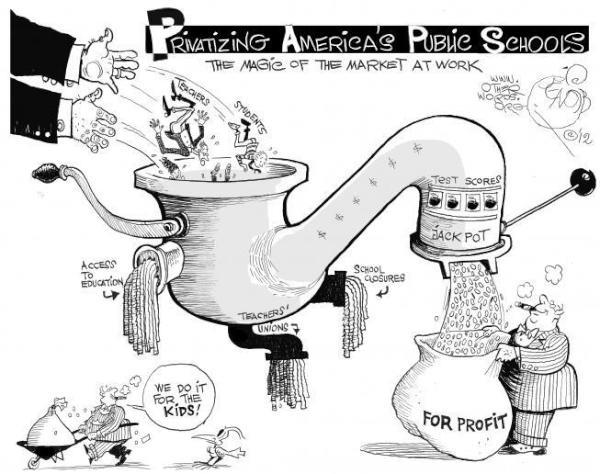
Harvard Magazine published an interesting article with fresh thinking about school choice. No blue-sky claims, like the Friedman Foundation. No fear-mongering. Some thoughtful comments about unintended consequences.
“A recent paper models a choice system
that assigns schools according to families’ preferences, allotting seats at
more sought-after schools by lottery. Parents would compete for access to the
best schools, so that each school would not only reflect the socioeconomic mix
of the community but also become perfectly equal—and average—in quality, Avery
explains. But such a result, the model shows, would encourage wealthy families
to abandon the system for better-than-average schools that are either private
or in another district—a “flight” phenomenon widely documented already.
“In reality, though, researchers know
that school choice hasn’t worked this way. Because of variation in families’
school preferences, imperfect information, test-based admissions systems that
favor advantaged students, and other frictions, cities that have embraced
choice systems are very far from producing perfectly equal schools. In some
cases, school lotteries do help underserved students gain access to top
schools. What, then, of the model? “What happens in practice is, we think, some
combination of things,” Avery suggests. Real-life choice systems resemble
something between neighborhood schools and a perfect-competition choice system.
If schools remain sufficiently unequal, then people can afford to continue to
live where they’re living. Says Avery, “It’s sort of a paradox.”
The most elusive yet most important goal
is to increase the supply of good schools in every neighborhood.